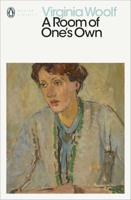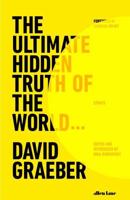Publisher's Synopsis
From the introduction: The "Average Reader" and The Recipe for Popularity.
Not only is art a factor in life; it is a factor in all lives. The division of the world into two classes, one of which has a monopoly of what is called "artistic feeling," is arbitrary and false. Everyone is an artist, more or less; that is to say, there is no person quite without that faculty of poetizing, which by seeing beauty creates beauty, and which, when it is sufficiently powerful and articulate, constitutes the musical composer, the architect, the imaginative writer, the sculptor and the painter. To the persistent ignoring of this obvious truth is due much misunderstanding and some bitterness. The fault lies originally with the minority, the more artistic, which has imposed an artificial distinction upon the majority, the less artistic. The majority, having accepted the distinction, naturally takes care to find in it a source of pride, and the result is two camps which vituperate and scorn each other: the minority despises the majority for being " inartistic," and the resentful majority accuses the minority of arrogance and affectation.
In the field of fiction - the art with which this book is concerned, and which, perhaps, most closely touches the world at large - the two camps seldom communicate save in terms of sarcasm. Certainly they make no attempt towards understanding one another. That the majority could understand the minority is perhaps impossible; but the minority might and should understand the majority, and not until it begins to do so will the best forms of art begin to take hold of the race. Now the appearance of an extremely popular novel, which, used with pacific intelligence, might form a basis of mutual comprehension, is in- variably turned into a fresh casus belli. The champions of the minority fall on the book with all arms of satiric analysis and contempt; the champions of the majority defend it with what skill they can muster, making up in brute force what they lack in adroitness. The minority says curtly, "This is not art"; the majority answers, "Never mind, it is what we like. Besides, it is art. Who are you that you should define art? Anyhow it is popular." The minority sneers; the majority retorts a single word, "Envy." The breach is widened. Why should these things occur? Why should not the minority abandon the role of the superior person, and reason together - if not with the enemy? To admire the less admirable in art is not a crime, nor the fruit of a mischievous intention to overthrow the august verdict of the centuries: nor is it a mere vagary. If 50,000 people buy a novel whose shortcomings render it tenth-rate, we may be sure that they have not conspired to do so, and also that their apparently strange unanimity is not due to chance. There must be another explanation of the phenomenon, and when this explanation is discovered some real progress will have been made towards that democratization of art which it is surely the duty of the minority to undertake, and to undertake in a religious spirit. The missionary does not make converts by a process of jeers; he minimizes the difference between himself and the heathen, assumes a brotherhood, and sympathetically leads forward from one point of view to another; and in order thus to lead forward he finds out what the first point of view is. I am aware that a few of the minority regard the democratization of art as both undesirable and impossible, but even they will admit that this particular problem in the "psychology of crowds" - the secret of popularity in an art - has sufficient intrinsic interest to be attacked for its own sake, apart from any end which the solving might or might not serve....










